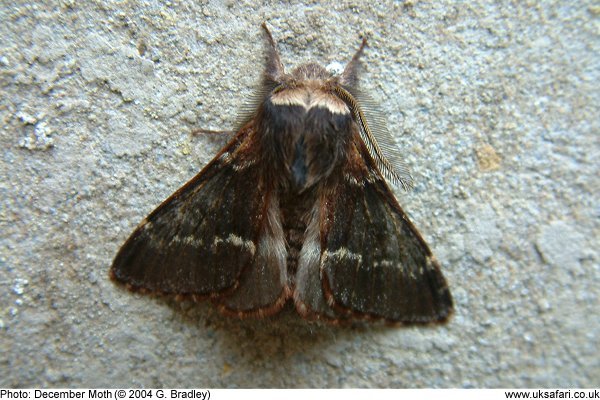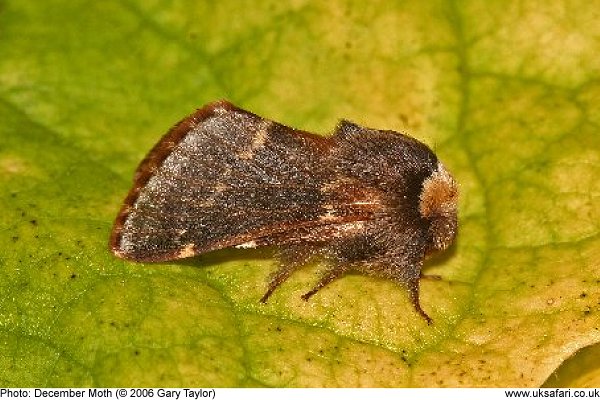 Quick Facts
Quick Facts
Scientific name: Poecilocampa populi
Size: Wingspan approx 30 - 45mm
Distribution: Found throughout the UK
Months seen: October to December
Habitat: Woodlands, parks and gardens
Food: Larvae feed on a variety of trees including; oak, birch, lime and hawthorn
Special features: December moths get their name from the time of year they're most frequently seen flying in the UK. They can often be seen flying around street lights at night. The males and females have similar markings however the females are larger.
December moths lay their eggs in late autumn or early winter, but they don't hatch until the following spring, usually around April time. The hairy caterpillars are active until July. They're variable in colour. Some are black with red spots, others are grey with orange/brown diamonds down the back, and some are grey all over.
 Related Pages
Related Pages

 Popular Pages
Popular Pages
Amphibians, Bats, Badgers, Beetles, Birds, Birds of Prey, Bumble Bees, Butterflies, Caterpillars, Creepy-Crawlies, Deadly Spiders, Dolphins, Dragonflies, E-Postcards, False Widow Spiders, Free Newsletter, Frogs, Fungi, Garden Spiders, Glow-Worms, Grey Squirrels, Hedgehogs, House Spiders, Ladybirds, Mammals, Marine Mammals, Moths, Owls, Reptiles, Spiders, Toads, Trees, Wildlife Hospitals
Copyright © 2020 G. Bradley UK Safari. All rights reserved | About Us | Links | Contributors


 December Moth
December Moth



